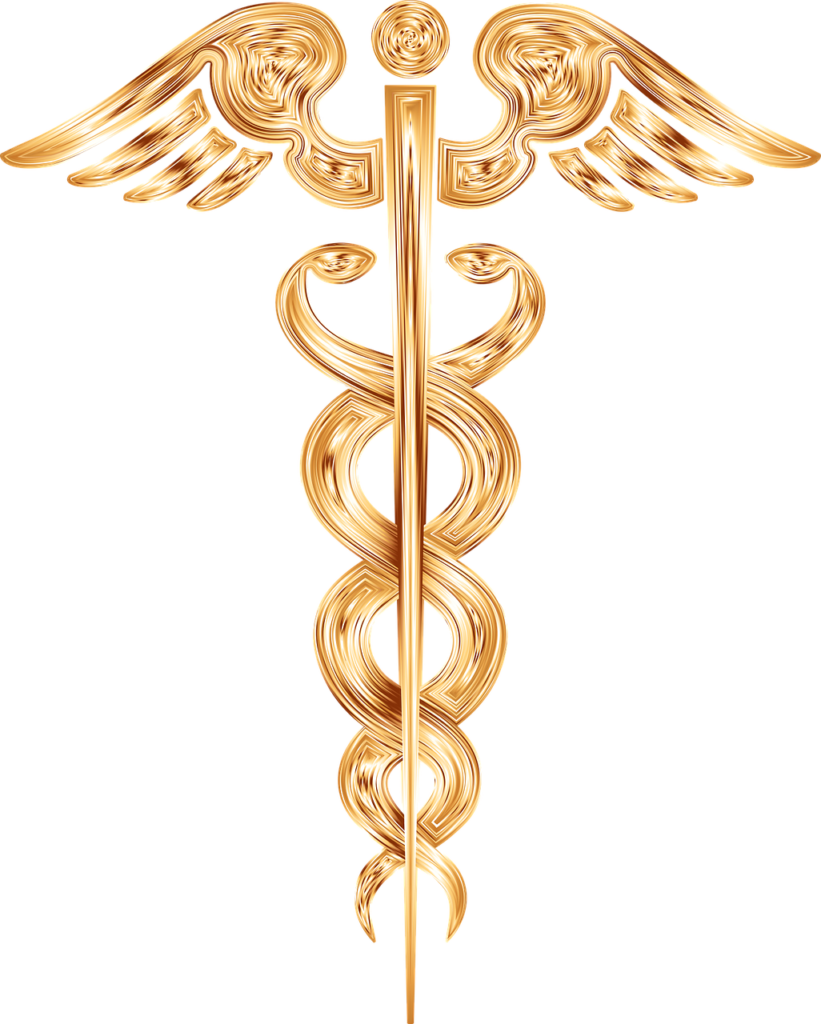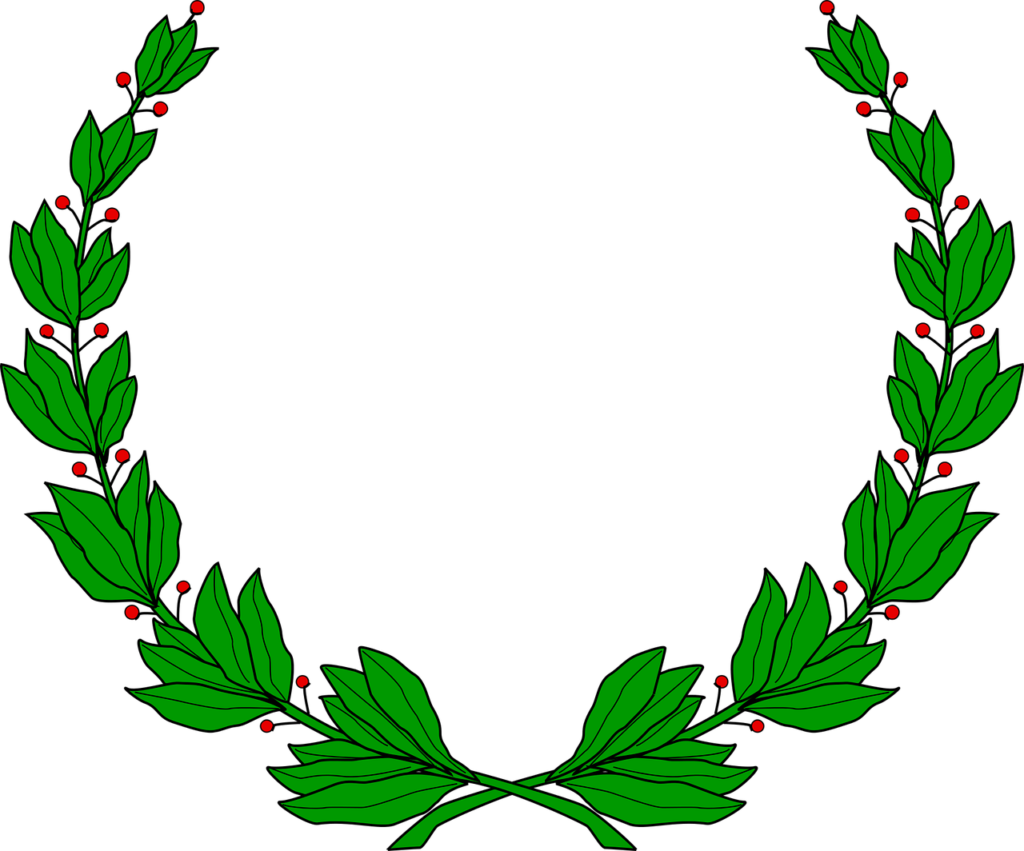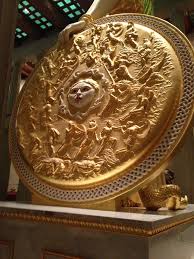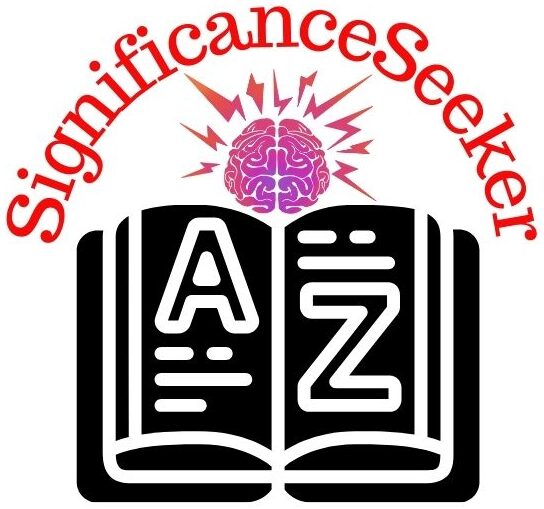Greek mythology, a treasure trove of tales woven with gods, heroes, and legendary creatures, holds within its folds a rich tapestry of symbols. These symbols transcend time, resonating with us even today, offering glimpses into ancient beliefs, values, and narratives. Let’s embark on a journey to unravel the stories behind some of the most iconic symbols of Greek mythology.
The Origin, History, and Stories Behind The Caduceus

The Caduceus, an iconic symbol often associated with commerce, negotiation, and medicine, carries a rich history dating back to ancient civilizations. This symbol, characterized by two entwined serpents around a staff, has captivated the imagination of humanity for centuries.
Ancient Origins of the Caduceus – Mesopotamian Roots
In the cradle of civilization, Mesopotamia, the Caduceus finds its earliest origins. The symbol appears in artifacts dating back to the Sumerians, where it was associated with the god Ningishzida, the deity of vegetation and the underworld. The intertwined serpents symbolized the duality of life and death, regeneration, and balance.
Greek Mythology: Hermes and the Caduceus
In Greek mythology, the Caduceus is most famously associated with Hermes, the messenger of the gods. Legend has it that Hermes wielded the Caduceus as a divine staff, endowed with the power to guide souls to the underworld. The intertwining snakes represented harmony and reconciliation, attributes befitting Hermes’s role as a mediator and messenger.
Evolution of the Caduceus in Greek Culture
Hermes as a Messenger of the Gods
Hermes’s Caduceus became emblematic of communication, eloquence, and diplomacy. As the herald of Zeus, Hermes used the Caduceus to facilitate peaceful negotiations and resolve conflicts among the gods.
Adoption by Asclepius and Association with Healing
In later Greek culture, the Caduceus became intertwined with the domain of healing. Asclepius, the god of medicine and healing, adopted the symbol, imbuing it with connotations of health, rejuvenation, and the restoration of balance.
The Caduceus in Roman Culture
With the spread of Greek culture, the Caduceus found its way into Roman mythology and society. Romans associated the symbol with Mercury, the Roman counterpart of Hermes, further solidifying its association with commerce, trade, and negotiation.
Symbolism in Roman Mythology and Society
In Roman society, the Caduceus represented not only commerce but also the authority of magistrates and the sanctity of heralds. Its presence adorned coins, monuments, and official decrees, symbolizing the power and prestige of the Roman state.
Modern Interpretations of the Caduceus
Adoption in Medicine and Healthcare
Despite its ancient origins, the Caduceus experienced a resurgence in the modern era, particularly in the field of medicine. In the late 19th century, it was mistakenly adopted by medical organizations in the United States, often confused with the Rod of Asclepius, the true symbol of medicine.
Symbolism in Commerce and Trade
Beyond medicine, the Caduceus remains a potent symbol in commerce and trade, representing negotiation, diplomacy, and the exchange of goods and services. Its presence can be seen in corporate logos, financial institutions, and international organizations.
Controversies Surrounding the Caduceus
The Caduceus’s misappropriation in the medical field has sparked controversy and debate. Critics argue that its association with commerce detracts from its true meaning and undermines the noble principles of medicine.
Debates on Appropriate Use in Medical Symbols
Despite efforts to rectify the misunderstanding, the Caduceus continues to be erroneously used in medical contexts. Advocates for accuracy and historical integrity call for the reinstatement of the Rod of Asclepius as the true symbol of medicine.
Depictions in Literature, Art, and Media
Throughout history, the Caduceus has permeated popular culture, appearing in literature, art, and media. From ancient epics to modern novels, its symbolism continues to inspire writers, artists, and filmmakers alike.
Influence on Contemporary Symbols and Logos
The Caduceus’s influence extends beyond the realms of myth and legend, shaping contemporary symbols and logos. Its iconic image adorns everything from medical institutions to commercial enterprises, a testament to its enduring legacy.
The Origin, History, and Stories Behind The Thunderbolt of Zeus

Zeus, the king of the Olympian gods, commands authority, power, and awe in Greek mythology. Among his arsenal of symbols and weapons, the thunderbolt stands out as one of the most iconic and potent.
Zeus, also known as Jupiter in Roman mythology, is the ruler of Mount Olympus and the god of the sky, lightning, thunder, law, order, and justice. He is often depicted as a mature and regal figure, wielding a thunderbolt in his hand, ready to assert his dominance over the heavens and the earth.
The Mythological Background of Zeus
Birth and Childhood
According to Greek mythology, Zeus was the son of Cronus and Rhea, the youngest of their siblings. He narrowly escaped being devoured by his father, who feared a prophecy that one of his offspring would overthrow him. Zeus was raised in secrecy and eventually defeated Cronus, establishing himself as the supreme deity.
Rise to Power
After overthrowing Cronus, Zeus emerged as the ruler of the cosmos, leading the Olympian gods in their divine hierarchy. His domain extended over the sky and the natural forces, with the thunderbolt as his primary weapon of authority.
The Thunderbolt: Symbol of Zeus’s Authority
The thunderbolt, also known as the lightning bolt, symbolizes Zeus’s power over the elements and his ability to enforce divine justice. It is a potent symbol of his wrath and role as fate’s ultimate arbiter.
Mythological Stories
The origin of the thunderbolt is steeped in myth and legend. According to some accounts, Zeus forged the thunderbolts himself in the heart of Mount Olympus, imbuing them with his divine power. Other stories attribute the creation of the thunderbolt to the Cyclopes, skilled blacksmiths, and allies of Zeus.
Cultural Significance
The thunderbolt holds significant cultural importance in ancient Greek society, representing not only Zeus’s authority but also the forces of nature and the cycle of life and death. It was often invoked in rituals and ceremonies as a symbol of protection and divine favor.
The Thunderbolt’s Role in Greek Mythology
Use in Battles
In Greek mythology, Zeus wields the thunderbolt in battles against titans, giants, and other mythical creatures. It is a weapon of unparalleled destructive power, capable of smiting his enemies with a single strike.
Zeus’s Wrath
The Thunderbolt is also a tool of punishment, used by Zeus to mete out justice and retribution to those who defy him or challenge the natural order. It serves as a reminder of his omnipotence and the consequences of defying divine authority.
The Thunderbolt in Art and Literature
Throughout antiquity, the thunderbolt was a popular motif in Greek art and sculpture, often depicted alongside images of Zeus or other gods. It symbolized divine power and the forces of nature, inspiring awe and reverence in worshippers.
References in Classical Literature
In classical literature, the thunderbolt features prominently in epic poems such as Homer’s “Iliad” and “Odyssey,” where Zeus uses it to assert his dominance over both mortals and immortals. It is described as a fearsome weapon that leaves destruction in its wake, striking fear into the hearts of all who behold it.
Modern Interpretations and Popular Culture References
Impact on Contemporary Media
The thunderbolt continues to captivate audiences in modern times, appearing in various forms of media such as films, television shows, and video games. Its iconic status as a symbol of power and authority is often referenced in popular culture, reaffirming its enduring relevance.
Symbolism in Modern Society
In contemporary society, the thunderbolt serves as a metaphor for sudden and dramatic change, evoking notions of unpredictability and volatility. It remains a potent symbol of strength and resilience, reminding us of the awe-inspiring forces that shape our world.
The Origin, History, and Stories Behind The Trident of Poseidon

Poseidon, the mighty Greek god of the sea, is often depicted wielding a powerful weapon known as the Trident of Poseidon. This iconic symbol holds significant mythological and cultural importance, with its origins dating back to ancient Greek mythology. In this article, we’ll delve into the intriguing history, symbolism, and stories behind the Trident of Poseidon.
The Mythological Origins of Poseidon
In Greek mythology, Poseidon is one of the twelve Olympian gods, ruling over the seas, earthquakes, and horses. He is often portrayed as a powerful deity with a distinct personality and a penchant for wielding his fearsome Trident. According to mythological accounts, Poseidon obtained the Trident when the Cyclops forged it for him during the Titanomachy, the epic battle between the Titans and the Olympian gods.
Symbolism and Meaning of the Trident
The Trident of Poseidon is more than just a weapon; it symbolizes power, authority, and control over the vast expanse of the sea. In ancient Greek culture, the Trident represented Poseidon’s dominion over the oceans and his ability to unleash storms and earthquakes at will. Its three-pronged design is often interpreted as a metaphor for Poseidon’s triple domain: the heavens, the earth, and the sea.
The Trident in Art and Culture
Throughout history, artists and craftsmen have been inspired by the imagery of Poseidon wielding his Trident. Ancient Greek pottery, sculptures, and mosaics frequently depicted the god in various mythological scenes, often brandishing his iconic weapon. The Trident’s influence extended beyond ancient times, with artists from different cultures incorporating its imagery into their works of art.
Historical Accounts of the Trident
References to the Trident of Poseidon can be found in numerous ancient texts and artifacts. From Homer’s epic poems, such as the Iliad and the Odyssey, to the writings of later Greek and Roman authors, the Trident is consistently portrayed as a symbol of Poseidon’s divine authority. Archaeological discoveries, including ancient statues and temple reliefs, further corroborate the Trident’s significance in ancient Greek society.
Legends and Stories Surrounding the Trident
The Trident of Poseidon is central to many myths and legends featuring the sea god. Tales of Poseidon wielding his Trident to create storms, stir up earthquakes, and even shatter rocks abound in Greek mythology. The Trident’s association with Poseidon’s godly powers has also influenced maritime folklore, with sailors often invoking his name for protection and guidance on their voyages.
The Trident in Popular Media
In contemporary culture, the Trident of Poseidon continues to captivate audiences through its portrayal in movies, literature, and other forms of media. From Hollywood blockbusters like “Pirates of the Caribbean” to bestselling novels and video games, the Trident remains an enduring symbol of maritime adventure and mythological intrigue.
Other Notable Symbols in Greek Mythology
Beyond the Caduceus, Thunderbolt of Zeus, and Trident of Poseidon, Greek mythology boasts an array of other symbols, each with its own unique significance.
The Olive Branch: Symbol of Peace and Prosperity

In ancient Greece, the olive tree held immense cultural and economic importance. The Olive Branch, often depicted in the hands of Athena, goddess of wisdom and warfare, symbolizes peace, prosperity, and the bounties of civilization.
The Laurel Wreath: Symbol of Victory and Achievement

The Laurel Wreath, woven from the leaves of the bay laurel tree, serves as a symbol of victory and achievement. In Greek mythology, Apollo, the god of music, poetry, and prophecy, is often portrayed wearing a Laurel Wreath as a mark of his triumphs.
The Aegis: Symbol of Protection and Authority

The Aegis, a shield or cloak often adorned with the head of the Gorgon Medusa, symbolizes protection and divine authority. Wielded by both Zeus and Athena, the Aegis instills fear in enemies and offers sanctuary to allies.
Related: Meaning & Symbolism of the Tree of Life
Conclusion
As we delve into the fascinating world of Greek mythology symbols, we uncover timeless narratives and profound meanings embedded within these iconic emblems. From the Caduceus to the Thunderbolt of Zeus and the Trident of Poseidon, each symbol offers a glimpse into the rich tapestry of ancient beliefs and values that continue to captivate our imaginations today.
FAQs
1. What is the significance of the Caduceus in modern medicine?
The Caduceus has erroneously been associated with medicine, likely due to its similarity to the Rod of Asclepius, the true symbol of healing. However, it continues to be used in medical insignia and logos.
2. Why does Zeus wield a Thunderbolt?
The Thunderbolt symbolizes Zeus’s dominion over the skies and his ability to assert his authority with overwhelming force.
3. How does Poseidon use his Trident?
Poseidon employs his Trident to command the seas, stir up storms, and assert his control over maritime domains.
4. What does the Olive Branch represent in Greek mythology?
The Olive Branch symbolizes peace, prosperity, and the blessings of civilization, often associated with the goddess Athena.
5. Why is the Laurel Wreath a symbol of victory?
In ancient Greece, the Laurel Wreath was awarded to victors in athletic competitions and as a mark of honor for notable achievements.
6. What does the Aegis signify in Greek mythology?
The Aegis, often associated with Zeus and Athena, represents divine protection and authority, instilling fear in enemies and offering sanctuary to allies.


1 thought on “Meaning and Origin of Greek Mythology Symbols”